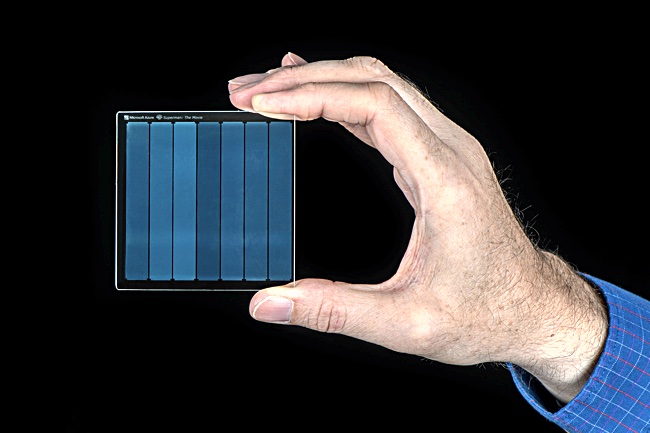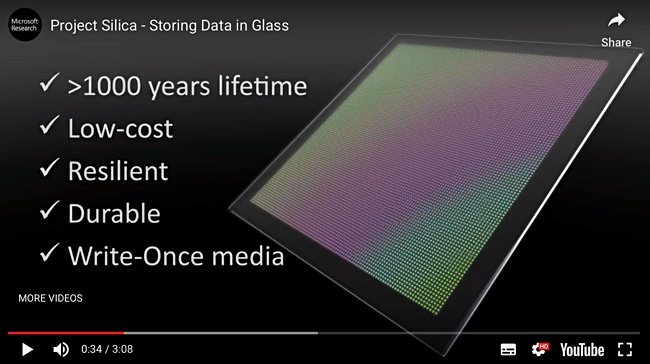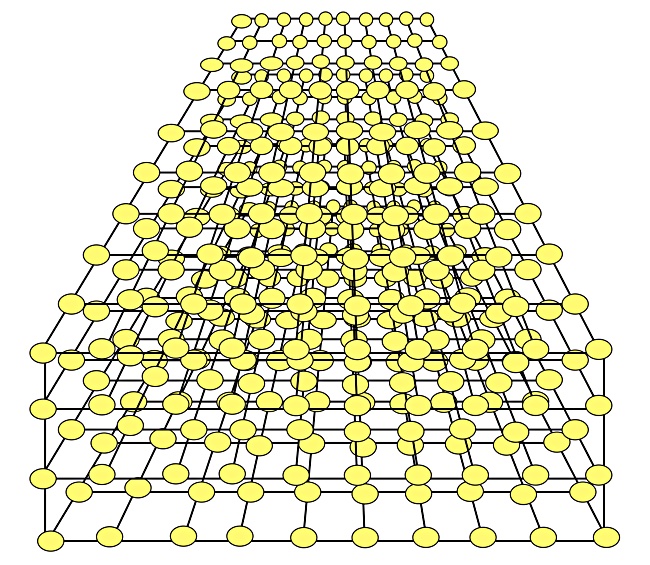Microsoft has revealed more about its Project Silica glass-based archive at Ignite in Orlando, saying it can store the 1978 Superman movie in a three-inch square slab of quartz.
Microsoft’s interest with Project Silica is to develop a long-lasting cold data storage archive for its Azure public cloud – which should last longer than ten years.
As The Register reported in April last year year Microsoft is working with the UK’s University of Southampton on the project. It involves recording voxels, volumetric elements of data, in 3D layers inside quartz glass media. These are created using femotosecond laser pulses to write polarisation-based patterns into the glass.

Project Silica’s square quartz glass slab.
The media is a 75 by 75 by 2 millimetres thick (2.95 x 2.95 x 0.08 inches) slab of quartz glass. It is mounted in a holding frame which moves it from left to right and forwards-backwards underneath the laser, as a video shows.

The laser fires pulse of light lasting one quadrillionth, or one millionth of one billionth, of a second at the slab, focusing on a specific depth. Theoretically there can be up to 100 layers and the slab stores 75.6 GB of data plus error redundancy codes. We are not told how many voxels there are in each layer.
We could envisage a 3D lattice structure with voxels at the lattice line intersection as in this diagram:

That means the mechanical movement of the holding frame has to be precise, for voxel positioning accuracy. We think, streams of voxels are written along a track to minimise start-stop holding frame movement transitions and the time they take. With the laser pulses being so fast, the bulk of the data writing time will be taken up with moving the glass slab underneath the laser.
Voxel variations
The voxels vary by x, y, z position, orientation, and size. Orientation is used to encode a colour and the size is varied by changing the power of the laser pulse. We think a voxel encodes a pixel in a movie frame; it’s a logical assumption.
The glass slab, once written, is archived and accessed for reads using a read head with a computer-controlled microscope/camera below the slab and light shone through the glass from above. The glass slab is placed in a read head frame and moved in x.y directions to bring voxels underneath the light source.
Warner Brothers
Warner Brothers worked with Microsoft on this as it needs to archive films. The attraction of Project Silica scheme is that the glass slabs do not need storing in temperature-and humidity-controlled conditions, do not need their data periodically refreshed, are pretty much immune to shock, heat and water damage and can store the recorded data for a 1,000 years.
The read head system focses on the data layer of interest with a camera capturing the light pattern, the set of polarisation images from that layer. These images are processed to obtain the orientation (colour) and strength (size) of each voxel. The read head then focuses on the next layer. Software, using machine learning models, rebuilds the original data from the read voxel pattern values.
But, there is no way of verifying that data has been written until the glass slab is read. Therefore, a movie archiving workflow, using Project Silica, would need a verification read process..
There was a previous 1,000-year archive storage technology, the Millenniata M-Disk from 2009. However, Millenniata went bankrupt in 2016 and the company which bought its assets, Yours.co, no longer has a functioning website. The disks might have lasted 1,000 years but the technology business framework collapsed inside ten.
Check out a Microsoft blog to read more about archiving the Superman movie.







